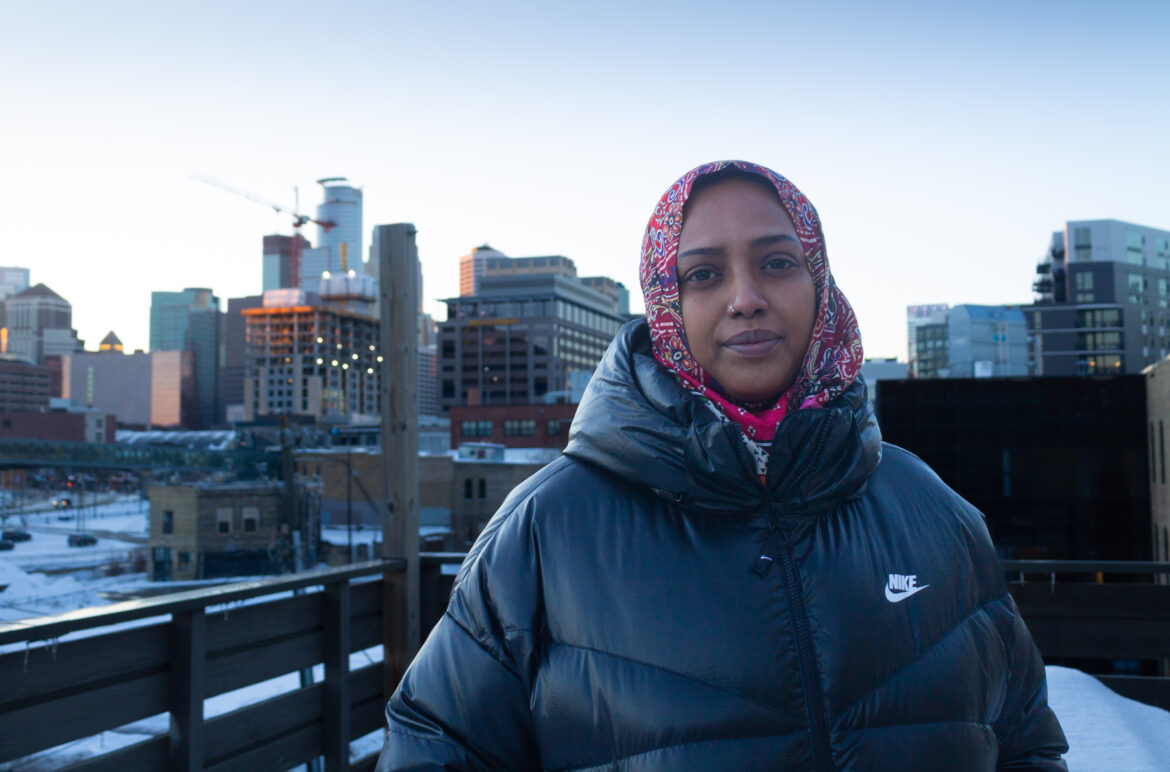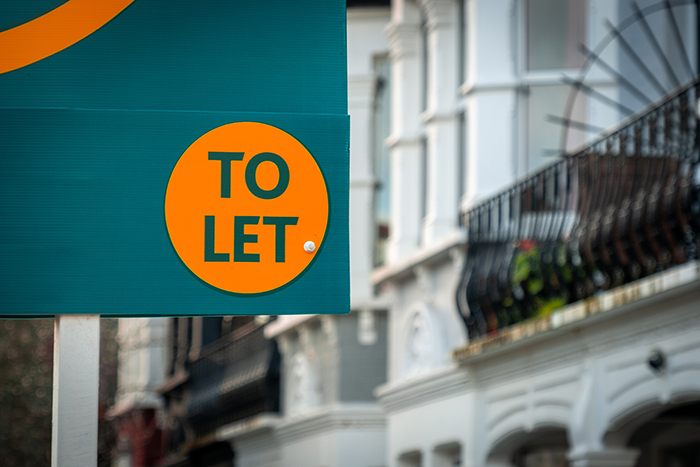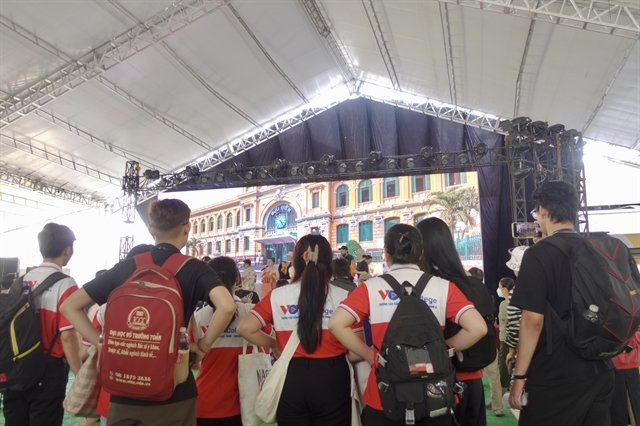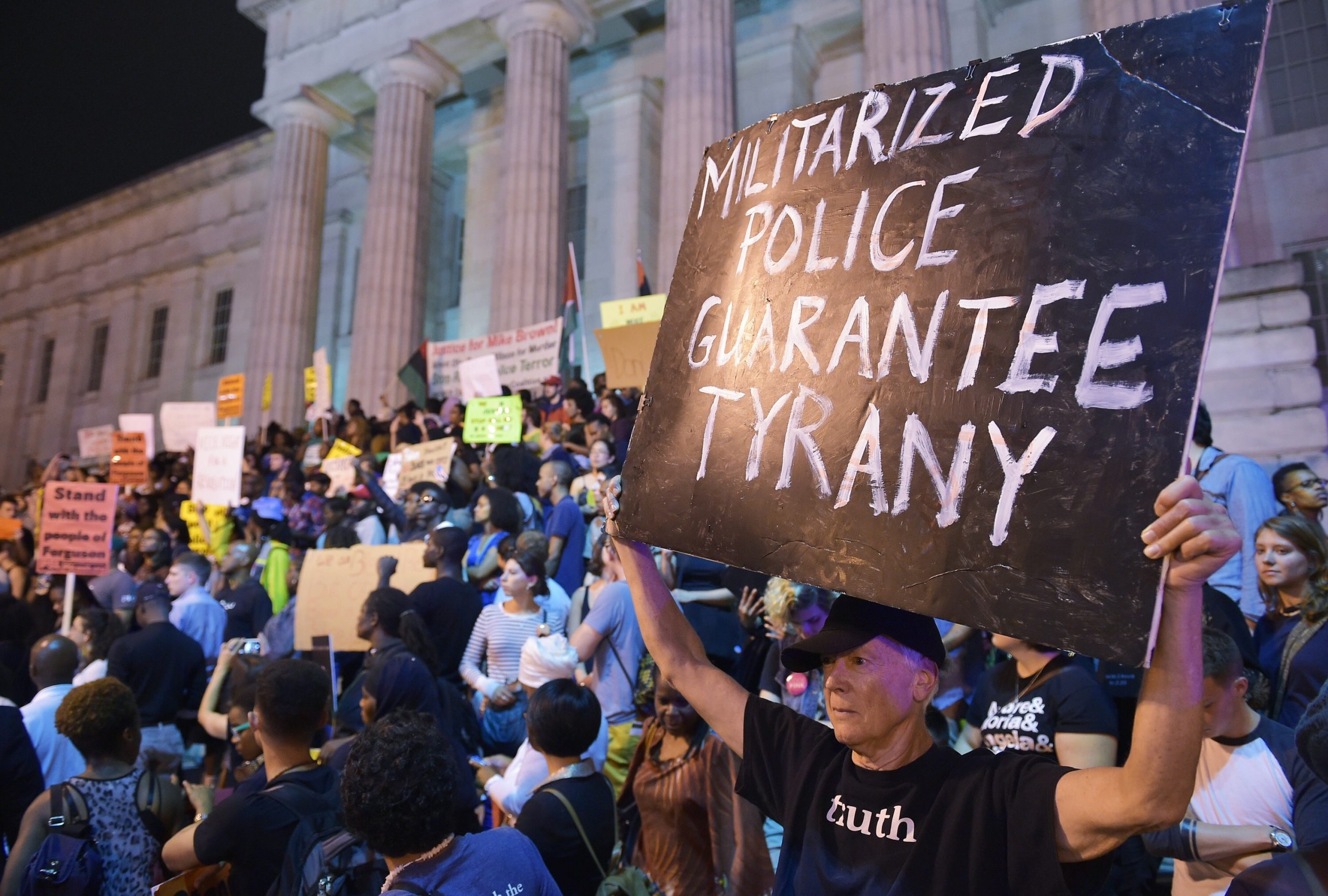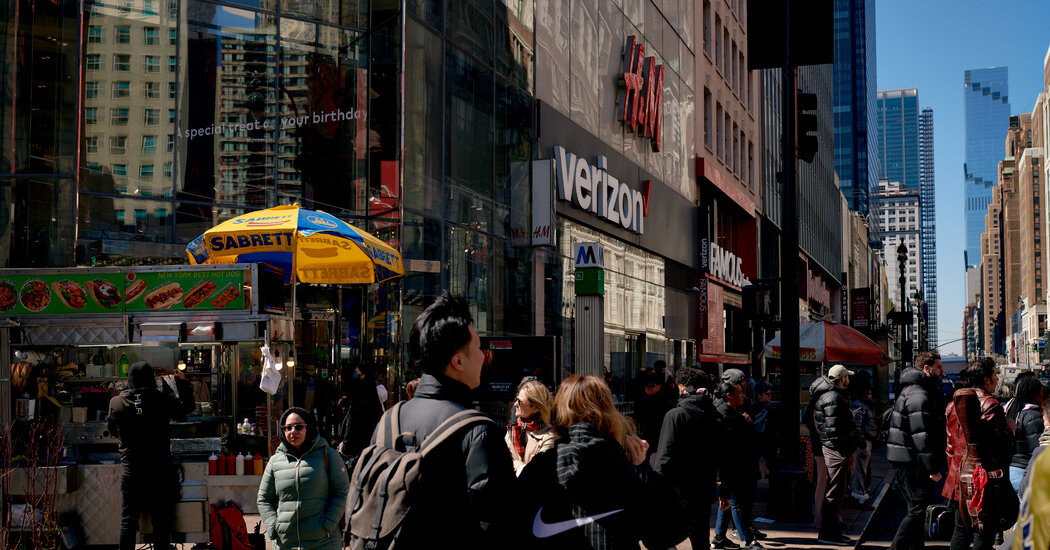[ad_1]

This story originally appeared in Workday on March 6, 2023. It is shared here with permission.
In January 2021, Khali Jama says she began working her second job at Amazon’s MSP1 fulfillment center in Shakopee, Minn., an outer suburb south of Minneapolis. As a single mother of two, she says she’s always had two jobs. While working as a mental health professional and as a nurse, it was important for Jama to find something that could accommodate her schedule, she explains. A friend told her about the Amazon warehouse’s supposedly flexible hours. However, she says, her friend did not disclose the grueling pace of work, opaque systems of management, or the toll the work takes on the physical health of employees. After one month on the job, Jama shares that she lost a troubling amount of weight.
Jama is not alone in expressing concerns about the company. In early January, Minnesota lawmakers introduced a Warehouse Worker Safety Bill that would require improved health and safety in warehouses. Amazon warehouse workers affiliated with the Awood Center, which organizes in Minnesota’s East African communities, threw their weight behind the bill, which calls for transparency regarding the inscrutable productivity quotas that place burdensome expectations on workers. Shortly after the bill was presented, Amazon announced the pending closure of its MSP5 sort center, also in Shakopee, by the end of March 2023. The company’s move prompted the Awood Center to make accusations of retaliation, and sent shock waves through other warehouses, like the one where Jama works.
Even before the closure of a neighboring warehouse, Jama already had concerns about company practices. She recalls that most of her jobs, especially those in the healthcare field, came with significant training—how to properly bend and lift, how to handle dangerous chemicals, and how to use safety equipment. But that training was inadequate at the Amazon warehouse, she says, where management is more concerned about checking boxes and protecting the company from liability, and less focused on hands-on training or delivering safety guidelines in non-English languages workers speak.
In response to a request for comment, Barbara Agrait, an Amazon spokesperson, told Workday Magazine over email, “Employees receive four full days of in-classroom and on-the-floor training upon hire, and 160 hours of continued coaching in their specific role.”
Justine Medina is a part-time worker at Amazon’s JFK8 fulfillment center in Staten Island, which voted in April to become the first unionized Amazon warehouse in the United States. She shares Jama’s concerns that such trainings are insufficient. “When you first get there, everyone goes through a three-day training, basically,” explains Medina, who is on temporary leave from her job, but will return in March. “But then you’re just thrown into whatever, and the way you’re trained again for everything is basically watching videos. And this is true for even dangerous type jobs.”
Jama says she has had experiences at the warehouse that trouble her. Once, she says, a package containing chemicals was accidentally delivered to the warehouse, something that Jama explains does occasionally happen. While handling the package, she says, unidentified chemicals seeped through the gloves Amazon provided her. Jama says her hands felt “scratchy” for a few days, and the situation scared her and made her wonder about the safety procedures at the facility. She asks, “What was the reason I had that glove on if it was not going to protect my skin?”
Agrait says the company doesn’t have a record of the incident, but claimed that Amazon provides training on hazardous materials at the beginning of employment and once a year. However, Medina says this training is insufficient, and she has seen the same incident play out at the JFK8 facility. Once, a product was leaking, she says, and workers wore gloves to handle it, but the chemical just went right through them. “People were getting what seemed like mild chemical burns,” she says. “Their hands were inflamed and red, and when they went to Amcare [on-site medical care], they were basically given anti-itch cream and told to go back to work.”
According to Jama, these conditions are worsened by an untransparent quota system. The first few months working in the warehouse, Jama says, new workers are observed while management assesses their pace, work ethic, and productivity. Then, she says, workers are given a quota that they must reach, without transparency around how that quota was determined, and at times without communicating the quota to the worker at all.
Agrait says Jama’s characterization is “incorrect,” stating, “We assess performance based on safe and achievable expectations that consider time and tenure, peer performance, and adherence to safe work practices.”
But Amazon’s quota policies have drawn scrutiny across the country, from lawmakers far beyond Minnesota: New York and California have recently passed acts specifically aimed at imposing some restrictions and transparency on the quota systems of companies that operate certain warehouses, bills that were influenced by Amazon’s industry practices and dominance. And Washington and New Hampshire have introduced similar pieces of legislation. “Those quotas generally do not allow for workers to comply with safety guidelines or to recover from strenuous activity during productive work time, leaving warehouse and distribution center employees who work under them at high risk of injury and illness,” states New York’s enacted law.
The Strategic Organizing Center, a coalition of unions, warns that “the company’s obsession with speed has come at a huge cost for Amazon’s workforce.” The coalition says this focus is largely to blame for why “Amazon’s injury rates were over double the injury rate in the notoriously hazardous general warehousing industry.”
Jama raised particular concern about the age discrimination inherent in such quotas: She says it is unfair for the company to give the same metrics to a 25-year-old worker as they will a 65-year-old worker, putting older workers at a disadvantage and additional risk. “This is so inhuman, you know,” says Jama. “Like, not everybody works at the same speed.”
In 2021, a proposed class action lawsuit charged that the company’s use of quotas in warehouses amounted to wage discrimination, since older employees are at greater risk of injury, but the company defeated the effort in the California court system.
In response to concerns about age discrimination, Agrait says that workers can request accommodations. But, according to Medina, “It’s an arduous process to submit an accommodation request. You would have to be really good at navigating systems and, because of that, there are a lot of people who have a hard time getting accommodations. Immigrant workers have a lot harder time getting accommodations. It’s not like Amazon goes out of their way to help them.”
Jama says this inscrutable system is worsened by a climate where basic health and safety concerns are dismissed. She says management places high barriers that make it difficult for workers to take the day off or get a break from the line, even if they are unable to walk or actively throwing up. Once, she says, she had the flu and was told that she could not leave because she had not accumulated enough hours, and she would need to visit a doctor and come back with a note. Jama asserts that such a policy was senseless, because, for a common case of the flu, she did not need to go see a doctor to make the case she was sick. “That’s when I was like, this place really doesn’t care. They see me coughing. This is someone sick. I would want to send that person home rather than get anybody else sick.”
Agrait disputes this characterization, claiming that workers are able to take paid personal time without advance notice or documentation. But Jama says this only applies to workers who have been there a certain threshold of time that she had not yet met. And Medina says that, in practice, when you’re at work and ask to leave, managers have discretion over whether to say yes or no. “The company is going to deny this,” Medina says, “but it’s true.”
Jama details another experience where she was feeling dizzy and wanted to lay down for a bit, but Amazon’s on-site medical care, provided by a company called Amcare, would not allow her to. As a health worker herself, Jama knew this was no way a medical provider should treat a person who was feeling unwell, and the mistreatment sparked her activism against Amazon’s inhumane treatment towards workers.
Agrait denied Jama’s characterization, claiming that Jama did not provide Amcare sufficient details of her condition, and claiming Jama was facing a personal issue, not a medical one. According to Agrait, Jama was informed she could use personal time to rest and could seek outside medical care.
Jama says the company’s denial is false: “That’s a lie, and I want to say that in front of them.”
There is reason to be concerned about the care that Amcare provides. A 2019 investigation by The Intercept and Type Media found that on-site medical units at Amazon warehouses have, in numerous instances, violated government regulations and Amazon’s own policy, and “Amcare employees nationwide were pressured to sweep injuries and medical issues under the rug at the expense of employee health.”
Jama wonders, “They have all these safety rules that they don’t follow. What is Amcare even for then?”
Minnesota Warehouse Worker Safety Bill moving forward
Organizers with the Awood Center (Awood means “power” in Somali) hope that the proposed safety bill can address some of these issues. The bill requires that warehouses above a certain size provide more clarity about quotas, using workers’ preferred language, with advance notice before the quota is enforced. It also stipulates that quotas cannot interfere with meal, restroom, or prayer breaks. The bill asks that warehouses provide records of an employee’s work speed, including under circumstances of disciplinary action against the worker.
The bill requires “the employer to hold monthly safety meetings for two years until incidence rates fall below 30 percent,” according to a bill summary. It also specifies enforcement procedures, including processes for citations and penalties if remedies are not addressed under a specified timeline. Impacted employees may also receive damages and costs, including reinstatement with back pay, at the district courts’ discretion.
The Occupational Safety and Health Administration (OSHA) found in a report published on January 9 that Minnesota Amazon warehouse workers have a 30% higher injury rate than the national average for Amazon warehouse workers.
This is especially concerning given the safety risks across the country. At the end of January, OSHA cited three Amazon warehouses—in Colorado, Idaho, and New York—for “failing to keep workers safe,” according to a press release from the Department of Labor. This follows the finding of violations at three other warehouses in Florida, Illinois, and New York in 2022. According to the press statement, violations at all of these facilities included “long hours required to complete assigned tasks” and “employees awkwardly twisting, bending and extending themselves to lift items.”
“Amazon’s operating methods are creating hazardous work conditions and processes, leading to serious worker injuries,” said Doug Parker, assistant secretary for Occupational Safety and Health, in the press release.
The Minnesota bill was approved by the House Labor and Industry Finance and Policy Committee and on March 1, the Minnesota Senate Judiciary Committee advanced the bill forward. There are three more committee hearings before the House and Senate floor votes.
While there is ample support from Democratic state representatives and labor unions, including the Teamsters, the bill also faces opposition. Republican Rep. Joe McDonald from Delano, Minn., testified that the bill was far-reaching and that laws were already on the books to hold Amazon accountable. He described the bill as a possible “sledgehammer” to all industries in order to specifically punish one bad actor.
An earlier iteration of the bill, presented in 2021, was passed with a bipartisan vote in the Minnesota House. But Minnesota Senate leadership refused to hold a hearing for it by the end of session, effectively killing the legislation. Despite this loss, the Awood Center has had some victories. In 2018, the worker center organized for and won accommodations for Muslim workers so they could observe Ramadan and successfully organized for additional prayer rooms in warehouses. In 2018, Amazon workers in Eagan, Minn. organized for improved climate control during hot summer months after workers complained of extreme heat and dehydration.
Nationally, Amazon faces a string of legal confrontations as high injury rates and safety concerns plague the warehouses. Frustrated and fed up with the lack of corporate accountability she faces at her facility, Jama stresses, “Amazon doesn’t care. Because the rich get richer, and the poor just stay poor. I just feel like the people who made this company special should be treated better than the people who are just sitting in the office doing absolutely nothing.”
“You don’t deal with people, you deal with apps.”
While the bill introduced significant measures in transparency surrounding safety, and provisions to address the high injury rates present in Amazon warehouses, there are still questionable company methods, including a thick layer of confusion and miscommunication between management and workers. Khali Jama emphasizes “You don’t deal with people, you deal with apps.”
The app Amazon uses for scheduling, pay stubs, news, and other communications with employees is titled A to Z. But Jama says that during training the company asked employees to download the app to their phones with insufficient explanation for how to use it. While the company claims the app is available in 20 different languages, Jama says it is not available in Somali, even though a significant portion of the workers there primarily speak this language. Many workers are not proficient in the use of technology and do not speak fluent English. Jama explains, “I don’t understand their system and I speak the language and understand my rights and I’m still confused. So imagine the people who don’t know their rights. Because the majority don’t even know how to use technology.”
The company claims that use of the app isn’t required. But, According to Medina, “A to Z is what you’re supposed to use to do everything. Your entire H.R. system is an app.”
Jama is more fluent in English than other workers at her facility, and she says she frequently must double as an interpreter in the warehouse for Somali-speaking workers. She is not compensated and alleges that Amazon does not do enough to provide interpretation for their overwhelmingly Somali worker base in the Shakopee warehouse. She wonders whether this gap in communication is intentional in order to sow confusion between the workers and management.
In response to these concerns, Agrait said that MSP1 employees are required to speak and understand English.
Along with the confusing layers of bureaucracy and lack of adequate language accessibility, workers allege many incoherent policies that make workers’ lives harder and lack common sense. When Jama calls into Amazon’s Employee Resource Center, she is frequently met with confusion and miscommunication, she says.
Jama explains that when workers call out sick through the A to Z app without sufficient paid sick time, Amazon asks that they either provide a doctor’s note or asks that they come into the warehouse and visit the Amazon medical facility in order to take the day off. (Medina says this is also the case at the JFK8 warehouse.) Jama, living in St. Paul, Minn., explains that her commute can take up to 40 minutes each way, and that when a worker is very sick this added barrier harms workers and does not allow them to truly take care of themselves when dealing with illness or injury.
With the high injury rates, lack of transparent management, and impractical sick-time policies, it’s no surprise that Amazon warehouses have some of the highest turnover rates in the industry. A New York Times investigation found that in Amazon warehouses turnover was approximately 150% annually, well over the industry average. Some reports question the sustainability of this model long-term.
Organizing pushes forward despite Shakopee warehouse closure
At the end of January, Amazon announced the upcoming closure of MSP5, an Amazon sort center located at 5825 11th Ave. East in Shakopee, the smaller of the two warehouses in the suburb. The closure will result in 680 workers losing their jobs.
The closure comes as a setback while the Warehouse Worker Safety Bill inches closer towards possible victory in the Minnesota Legislature. In a statement from late January, the Awood Center says: “We believe that Amazon’s decision to close this facility is wrong & retaliatory based on the powerful efforts of workers who have been organizing with Awood Center and demanding better working conditions, particularly through their advocacy for the Warehouse Worker Safety Bill in the Minnesota Legislature.”
“Amazon strongly opposed the Warehouse Worker Safety Bill last session,” the organization notes, “and it is now on the verge of passing.”
On February 12, workers demonstrated outside MSP5 alongside local union members and politicians, including Minnesota Senator Erin Murphy, State Representative Emma Greenman, and State Representative and former mayor of Shakopee, Brad Tabke. Workers made speeches and held signs criticizing Amazon for the closure and the ways the company has handled rehiring workers at other facilities.
While the company states that all workers will have the opportunity to be rehired, workers aren’t as hopeful. Some have raised concerns that the company is requiring employees to pass an exam that is administered in English as a condition of transfer. And some are unable to access other warehouses due to lack of transportation. Workers say the company is hiring outside workers to replace the current workforce, a sign that it does not plan to make sure all of its MSP5 employees maintain employment. An organizer from the Awood Center told Workday Magazine that workers feel retaliated against, and some workers even said they were met with threats from managers that if they continue to organize, Amazon will “replace them with robots.”
Agrait claims that translation services are being provided for workers who have questions related to the transfer. And, she says, most workers transferring from MSP5 to MSP1 have already taken the Hazmat test required to work at the latter.
But Abdirahman Muse, executive director of the Awood Center, told Workday Magazine over email that “workers dispute that the vast majority of employees at MSP5 have already taken and passed the basic Hazmat test to work at MSP1. That is not true based on what the workers have told us. In any event, if passing the test is a prerequisite to transferring, Amazon saying that the vast majority of employees transferring from MSP5 to MSP1 have already passed the test doesn’t mean much.”
“Amazon still has not responded to the workers’ concerns about transportation to other warehouses,” he says. “For many it will be difficult to reach the other locations given that they use public transportation, which is not practical for traveling long distances, and many have relocated to be close to the MSP5 warehouse.”
“Based on our conversations with workers, it is clear that Amazon is not providing adequate translation services,” Muse adds. “In addition, Amazon is not answering workers’ questions or providing information or their commitments to the workers in writing in their native languages.”
Agrait says that “the decision to close the Shakopee Sort Center is due to changing business needs and an effort to improve the experience for our employees, customers, partners, and drivers. Any suggestion to the contrary is incorrect. Every employee is able to transfer to another facility around the Twin Cities and we’re working hard to accommodate their preferences during this process.”
She says, “retaliation of any kind isn’t tolerated.”
But, according to Muse, “It seems clear to the Awood Center that Amazon is knowingly maintaining barriers to transferring to other warehouses and hiring replacement workers because of the MSP5 workers’ outspoken organizing activity at MSP5, including conducting multiple strikes and walkouts, making public demands for better wages and working conditions, and the recent vocal support for a Warehouse Worker Safety Bill in the Minnesota legislature that Amazon has vigorously opposed and is likely to pass this session.”
The company does “not deny that they are hiring outside workers to replace the current workforce even though they are giving lip service to opposing retaliation,” he adds.
Medina found the assertion that the company doesn’t tolerate retaliation laughable. “All of us who were lead organizers got at least one write-up during the election period for our unionization activities,” she says. “They definitely retaliate.” The company has famously fired several union organizers, citing business reasons or alleged infractions. Among them was Christian Smalls, who went on to help organize the successful union drive at the JFK8 facility where Medina works.
Nationally, the closure of the warehouse in Shakopee is on trend with closures of Amazon warehouses and other facilities across the country. One report explains that the company is scaling back its operations after a boom in shipping and online shopping during the pandemic. At the same time, Amazon also hints at the possibility of opening Amazon Fresh stores, grocery stores chains, in the Twin Cities metro. However, Amazon grocery stores in Twin Cities suburbs including Eagan, Eden Prairie, Burnsville, Coon Rapids, and Arden Hills, all sit empty and seemed to have been halted mid-construction, indicating an uncertain future for the grocery chains in Minnesota.
While the closure certainly comes as a blow to an organized worker base, neither the Awood Center nor Khali Jama are allowing it to slow down their plans to make the existing warehouses safer for workers. Jama is hopeful and shares that her passion for justice stems from her ardent commitment to her Muslim faith. “In this life,” she says, “people are not going to remember you by what you had. People will remember you for what you did. If I do die at least I know I did something in my life. That’s why it’s so important for me to fight for safety.”
Related
[ad_2]


